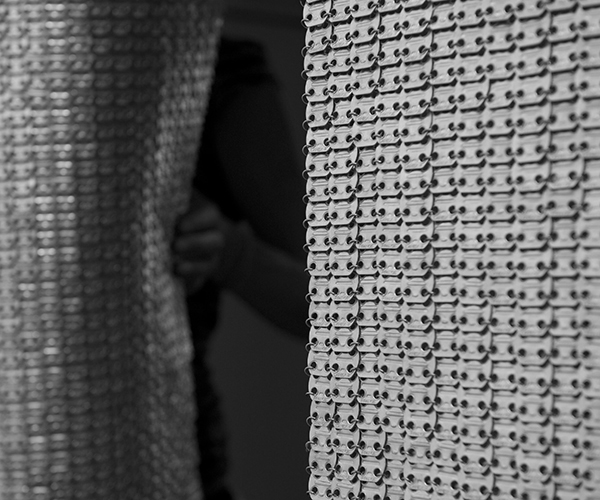Page - about
From architecture to jewellery
Pascale Lion is an interior architect and designer based in Paris. She teaches at the Paris’s National School of Decorative Arts. For the past twenty years, she has been exploring metallic meshes. She first developed large-scale items for architectural purposes.
Her research then led her towards simple shapes with simple uses, which bring chain mail into our everyday lives. Jewellery is the continuation of her research.
Since the first basic necklaces in 2009, loyal wearers have been attracted by the minimalist design and the timeless beauty of the material, as well as by the long-lasting and comfortable nature of these pieces made in France. Today the collection has over a hundred items and is available on all five continents, in quality concept stores and museum shops.

Beyond its obvious orderliness, chainmail is a fascinating material with an often unexpected behaviour. A permanent invitation to explore!
Chain mail is both a contemporary material and one that dates from far back in history (find out more…).
The oldest remains are attributed to the Celts and date back to the third century BC. Since then the manufacturing methods have remained the same: small iron rings are interlaced to make a “coat”, a piece of clothing which protects against sharp-edged weapons. The expression “coat of mail” first appeared in 1526.
Falling out of use with evolutions in warfare, chain mail resurfaced in the early 20th century with the increased importance of safety at work, with protective items such as gloves or aprons, for opening oysters or in slaughterhouses. It is also used to manufacture bulletproof vests or clothing for divers at risk of shark bites.
Nowadays, chain mail is produced on very complex machines, with great precision. Rings are now welded and smaller. The range of materials is wider to meet specific needs. The most widely used material is stainless steel*, then brass, bronze, aluminum, and titanium.
Chain mail must be assembled manually and requires great dexterity.
The finest chain mail is made of 135,000 rings per square metre.
The collection was selected by major archeology and history museums: the Laténium near Neuchatel, in Bibracte in Burgundy, at the Musée de l’Armée in Paris.




